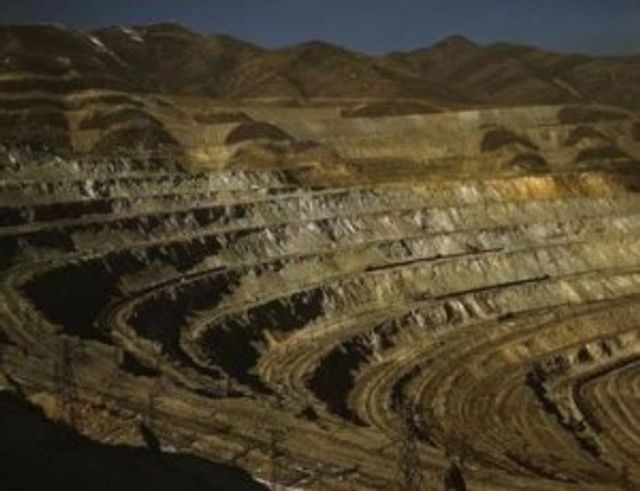
In this article we will take you to some gigantic man-made holes: open pit mines. We'll show you the biggest, deepest and deadliest mines in the world. Most of them are located in the United States and can be visited.
www.losaposc.om
In this article we will take you to some gigantic man-made holes: open pit mines. We’ll show you the biggest, deepest and deadliest mines in the world. Most of them are located in the United States and can be visited.
You’re guaranteed to see some spectacular views, and in the mines that are still active, you’ll see rock explosions and mining equipment including some of the biggest dump trucks in the world with capacities exceeding 300 tons and vehicle weights over 1,000,000 pounds (600,000 kg). Even if you have a large pick-up truck, it won’t be bigger than a tire of these massive earth-movers. Some mines also have a visitor center or a museum on-site and a few offer tours to the public.
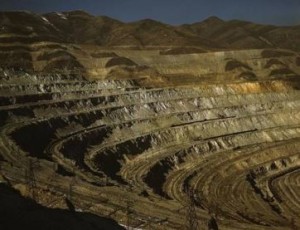
Open pit Mine (Photo by wikipedia )
The biggest iron mine
The world’s biggest open pit iron mine can be found near Hibbing, Minnesota. At its maximum, the area covered by the Hull Rust open pit mine is five miles (8km) long, 2 miles (3,2km) wide and 535 feet (180m) deep. It looks like a man-made Grand Canyon of over 2,000 acres (8,1km²). The first iron ore extractions were made here in 1895. Beginning as a small underground mine, the land eventually became one vast open pit as other mines began to develop and emerge. The center of the actual pit is located where the original town of Hibbing once stood. As the mine grew bigger, the town had to be moved. The move started in 1919 and took two years to complete. 185 houses and 20 businesses were moved a couple of miles to the south. Some of the larger buildings even had to be cut in half before they could be moved. A few remnants of the original town are left near a lookout point at the edge of the mine.
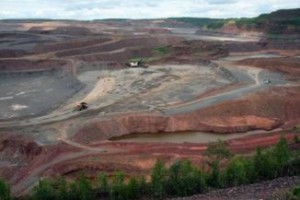
Hull Rust mine (Photo by joukork )
Since the Hull Rust mining operations started 1895, over 530 million tons of waste material and nearly 700 million tons of iron ore have been extracted from the pit. It has been calculated that all the material removed – approximately 1.2 billion gross tons – is equivalent to digging a tunnel through the core of the earth and out the other side. The mine is still operated today by the Hibbing Taconite Company, and taconite pellets are extracted at the rate of 8.2 million tons annually (not counting waste overburden).

Mining excavator (Photo by not1word )
There is an observation building from where you can overlook the mining activities. A slide presentation explains the history of the mine and early miner’s activities. A mine shovel bucket, a mining truck and a walking trail make the trip complete. The mine can be visited from mid-May through September.
The biggest mining operation on Earth can be found in Germany. At the Garzweiler strip mine they remove the top ground layer to extract lignite. The total mining surface is a staggering 18,5 ml² (48 km²) and several villages had to be moved for the mining operation. It is expected to extract 1,3 billion tons of lignite from the mine. After the mine’s depletion, it will be filled with water from nearby rivers, creating Germany’s second largest lake.

Strip mining machines working at the Garzweiler mine
For these amounts of earth moving, you also need some serious machinery. That’s why the Germans created Bagger 288. This 13,500 ton bucket-wheel excavator is the largest land vehicle in the world. Bagger can excavate 240,000 tons of coal or ground a day. The excavator is up to 220 m (721 ft) long and approximately 96 m (315 ft) high.
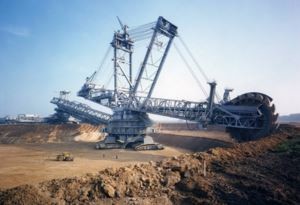
Bagger 288 (look at the 2 man at the base of the machine to get an impression of it’s size)
The deepest mine
Bingham Canyon Mine, located near Salt Lake City, is the world’s deepest man-made open pit excavation. The mine is 2.75 miles (4,5km) across and 0.75 mile (1,2km) deep. Since mining operations started in 1906, Bingham Canyon Mine has been the granddaddy of all copper mines. When you’re talking about the actual size of the mine, Bingham Canyon is simply the largest copper mine in the USA. If the mine was a stadium, it could seat nine million people.

Aerial view Bingham Canyon Mine(Photo by Ren Shore )
Bingham Canyon is primarily a copper mine, but it has also yielded a wide range of byproduct metals. These include 620 tons of gold, 5,000 tons of silver, 276 tons of molybdenum and large amounts of platinum and palladium. The Kennecott mining company extracts daily approximately 450,000 tons of rock out of the mine. With these production statistics, it’s no wonder that the Bingham Canyon Mine has been nicknamed “the Richest Hole on Earth.” The value of metals produced yearly at Bingham Canyon is US$1.8 billion dollars.

Bingham Canyon Mine (Photo by Timjarrett )
Kennecott has built a visitor’s center dedicated to educating the public about mining practices, sustainable development and the importance of mining in modern life. Visitors get breathtaking views and the opportunity to see giant electric shovels fill 320-ton capacity haul trucks that deliver ore to the in-pit crusher. A video, historic photographs and 3D models are also available inside the visitor’s center.
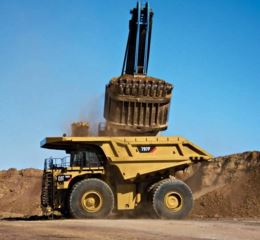
Dump truck getting loaded (Photo by Caterpillar )
The mine is operating 24 hours per day, 365 days a year. Visitors may come from April 1 through October 31, seven days a week. Entrance fees are $5 for passenger vehicles, $25 for mini tour buses and $50 for tour buses. All entrance fees are donated to charity.
The deadliest mine
Just outside Butte, Montana lies Berkeley Pit: a pit filled with greenish poison a mile and a half wide and over a third of a mile deep. It was once a thriving copper mine where millions of tons of copper ore, silver, gold, and other metals were extracted from the soil.
When underground mining became too costly in the 1950’s, Berkeley Pit became an open pit mine. As the mine grew bigger and deeper, groundwater began to seep into the pit, and pumps had to be installed to keep it from slowly flooding.

Berkeley Pit (Photo by toddtrigsted )
Thirty years later, the mine was so exhausted that it was no longer profitable. The pit was abandoned and the water pumps were shut down. Without the pumps, rain and groundwater gradually began to rise in the pit, leaching out the metals and minerals in the surrounding rock. The water became as acidic as a lemon, creating a toxic mixture of heavy metal poisons such as arsenic, lead, and zinc. No fish live there, and no plants line the shores. There aren’t even any insects around, only some rare kinds of microorganisms survive in the toxic water. The Berkeley Pit had become one of the deadliest places on earth. The iron-rich water near the surface is reddish, yielding to a vibrant lime-green hue not far below the surface, where copper concentrations are higher. If you were to drink large amounts of this water it would kill you by corroding your body from inside.

Water in Berkeley Pit (Photo by kolopres )
In 1995, a flock of snow geese stopped for a rest at the pond, and 342 of them died there. Authorities use gunshots and loudspeakers to scare away migrating waterfowl, but there have been a few smaller die-offs nonetheless. Sometimes a sinister mist creeps out of the Pit and into the streets of Butte. Citizens are scared about this potentially poisonous fog. The water level is still rising, and if unchecked it will spill over into the area’s groundwater in twenty years. That danger made the area one of the EPA’s largest Superfund sites. Currently, the EPA’s plan is to focus on containment.
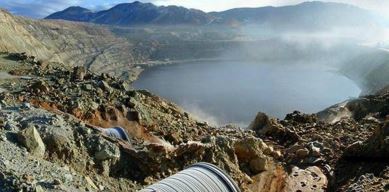
Berkeley Pit fog (Photo by toddtrigsted )
The water in the pit is so saturated with metals that Montana Resources Inc. is able to extract copper directly from the water. 13 million gallons (68 million liters) per day, is pumped from the deeper, copper-rich part of the lake to nearby scrap iron holding ponds, causing the copper and iron to swap places. The resulting copper sludge yields up to 180 tons of copper a month. The now iron-rich water is pumped back into the Berkeley Pit, creating the waterfall seen on the northeastern rim. In the meantime, the Pit has become a tourist attraction. There’s a small museum and gift shop located well above the water level. The Berkeley Pit Viewing Stand, open from March until November has an admission fee of $2.